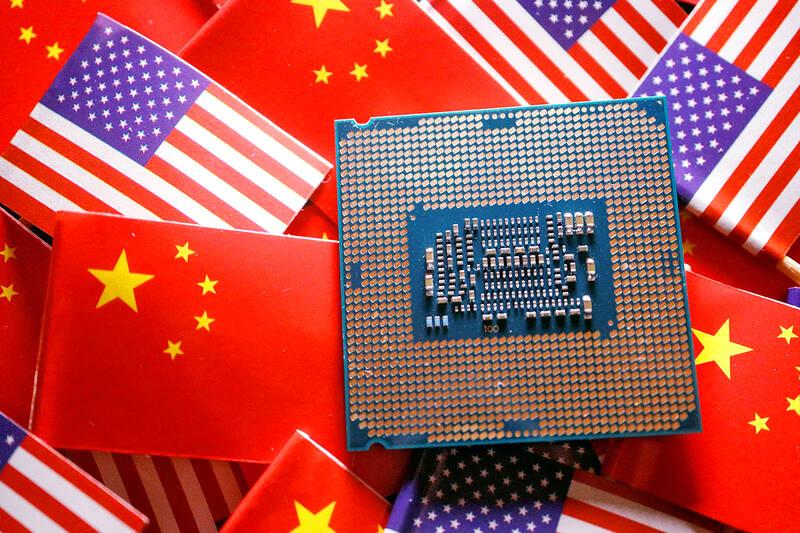The Uncharted Territory of AI in Military Applications
In an era where technology strides ahead at a breakneck pace, the global landscape of artificial intelligence (AI) finds itself becoming increasingly intertwined with military applications. Recent revelations from Chinese research institutions linked to the People’s Liberation Army (PLA) suggest a notable shift in the approach to open-source AI models, particularly evident in their usage of Meta’s Llama. This raises critical questions about the ethical implications and regulatory challenges facing AI development.
Meta’s Open-Source Dilemma
The research, spearheaded by a team from the Academy of Military Science (AMS) and other institutions, utilized Meta’s Llama 2 13B model as the cornerstone for an initiative dubbed “ChatBIT.” Their aim? To cultivate an AI tool capable of enhancing military intelligence and operational decision-making processes. As detailed in their June paper, the researchers adeptly tuned ChatBIT for dialogue and question-answering tasks specifically within a military context.
 Emerging AI technologies intensifying the global military equation.
Emerging AI technologies intensifying the global military equation.
The implications of this research are profound, amplifying concerns related to the potential misuse of open-source models by military entities. According to Sunny Cheung from the Jamestown Foundation, this represents a “substantial evidence that PLA military experts in China have been systematically researching and trying to leverage the power of open-source LLMs for military purposes.” This marks a pivotal moment in the ongoing arms race within the AI sector, igniting discussions around regulation, cybersecurity, and ethical responsibility.
The Fine Line of Acceptable Use
Meta, while publicly championing the open access to its AI innovations, attempts to navigate a complex maze of ethical guidelines and safety protocols. Their policies clearly state that any use of their models for military applications is unauthorized, yet as these developments unfold, one must wonder about the real efficacy of such policies. Despite the idealistic intentions, the very nature of open-source technology offers limited enforcement mechanisms.
Molly Montgomery, Meta’s director of public policy, emphasized that “Any use of our models by the People’s Liberation Army is unauthorized and contrary to our acceptable use policy.” However, the underlying concern remains—how effective can these policies be in a world where innovation transcends borders and restrictions? As geopolitical tensions rise, the need for stringent control measures becomes increasingly clear.
The Global AI Race
The backdrop of this research cannot be divorced from the broader geopolitical landscape. With the United States investing heavily in AI security measures, President Biden’s executive order aims to confront the potential risks of unregulated AI developments. As Washington lays down the groundwork for stricter limitations on AI investments in China, a concerning thought emerges. Are we, as a global society, adequately prepared to manage the dual-use nature of such powerful technology?
 Examining the rapid rise of artificial intelligence in military contexts.
Examining the rapid rise of artificial intelligence in military contexts.
As firms like Meta release their AI models into the wild, the conventional view of proprietary technology is shifting. China, keenly aware of the stakes, is accelerating its pursuit to dominate the AI landscape. This race is not merely about commercial success; it involves national security implications that cannot be overlooked.
Future Implications: More than Just Chatbots
Looking ahead, the potential applications of ChatBIT extend far beyond mere intelligence analysis. As articulated in their research, future refinements could see it employed in “strategic planning, simulation training, and command decision-making.” The methodologies behind these AI advancements hint at a significant pivot in how militaries might operate globally.
Despite the insights gleaned from ChatBIT, the small dataset upon which it was trained raises eyebrows. With merely 100,000 military dialogue notes, the model appears dwarfed when compared to its counterparts that operate on petabytes of data. This brings forth a salient question—what could such limited training genuinely accomplish in terms of achieving operational excellence?
The Broader Military Nexus
As this discourse unfolds, we must consider China’s broader strategy around AI integration within both military and civil domains. The PLA is not solely focused on combat technologies; it is also applying cognitive advancements to domestic security through systems designed for “intelligence policing.” The ethereal lines separating commercial AI and military utilization blur by the minute.
A reflection shared by William Hannas, a lead analyst at the Center for Security and Emerging Technology, encapsulates this dilemma profoundly: “Can you keep them [China] out of the cookie jar? No, I don’t see how you can.” The dynamics of research collaboration between China’s leading scientists and their international counterparts only compound the difficulties faced by the US and its allies.
Conclusion: A Call for Vigilance
As we navigate this brave new world, there emerges a pressing need for vigilance and a proactive approach to AI governance. With each advancement, we inch closer to a reality where AI—a tool meant to foster communication and efficiency—could potentially transform into a double-edged sword in warfare. The onus is on global leaders, technologists, and regulators to chart a course that prioritizes security and ethical implications while simultaneously fostering innovation.
In this nascent age, we stand at a crossroads, and the direction we choose will resonate across generations.


 Photo by
Photo by 












